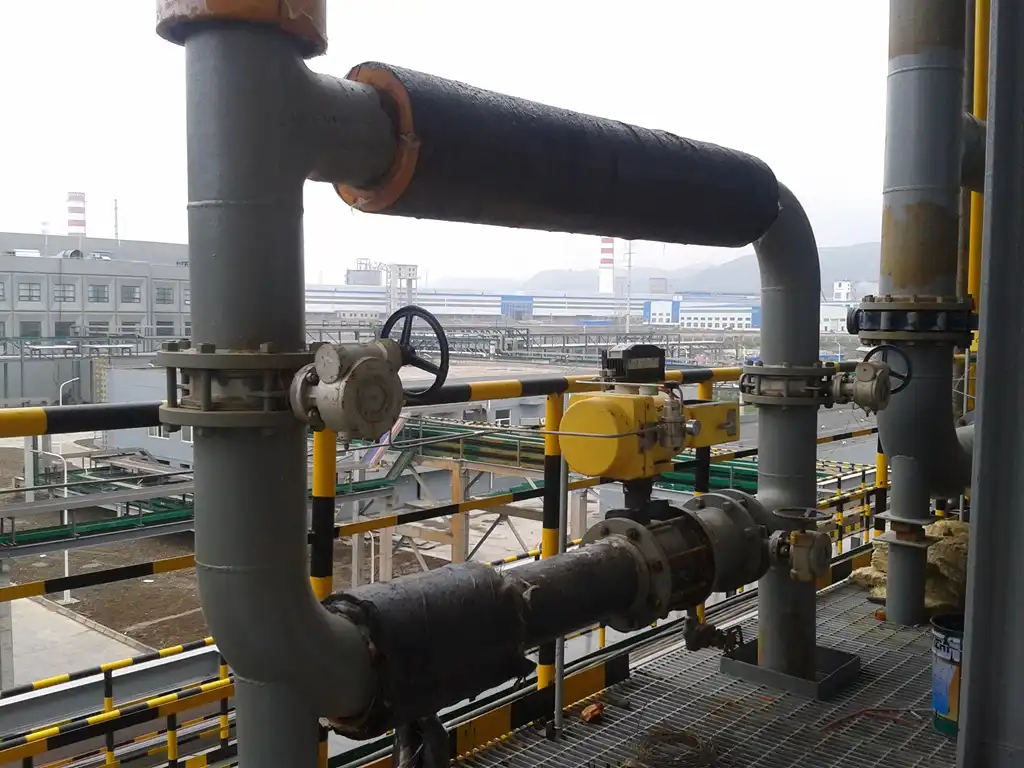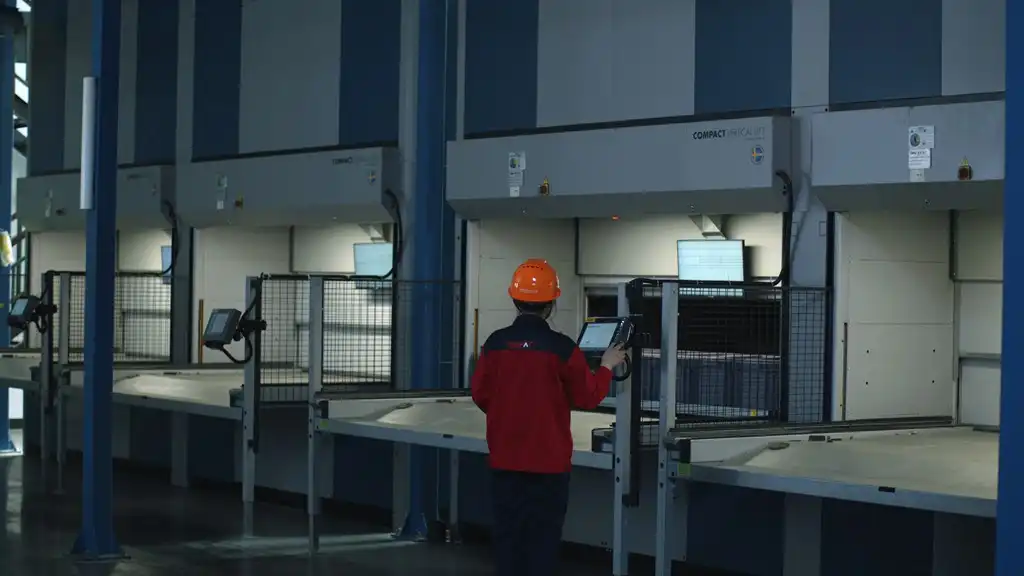Electric Butterfly Valve vs Pneumatic Butterfly Valve - Which Is More Reliable
In the oil and gas business, dependability is not just a word. It means less downtime, safer wells, and steady output. Electric and pneumatic butterfly valves are both small and cheap, and they can both control big flows. In hard drilling and processing conditions, however, they act in very different ways. Most of the time, pneumatic butterfly valves work better in harsh, dangerous, or fast-acting situations. On the other hand, electric butterfly valves tend to work better in clean power settings, precise control, and remote automation. The best choice relies on the medium, the environment, the level of safety needed, and the way you want to control it. We'll go over both types in more detail below, and we'll also show you how CEPAI can help you from the decision process to long-term service.

Core Reliability Differences Between Electric and Pneumatic Butterfly Valves
How Each Actuation Method Works?
An electric butterfly valve uses an electric actuator. The actuator has an electric motor, gearbox, and control unit. When it receives a signal, the motor turns the stem, and the disc opens or closes the flow. It connects easily with DCS, PLC, and remote control systems. It is also suitable when power supply is stable and when you need fine control.
A pneumatic butterfly valve uses compressed air. The actuator is either single-acting (spring return) or double-acting. Air pressure moves the piston or vane and rotates the disc. Spring return actuators can move the valve to a fail-safe position on loss of air. In large pipelines, pneumatic actuation is common because it can provide strong torque and fast motion.
Reliability Under Harsh Oilfield Conditions
In onshore and offshore oil and gas fields, valves face vibration, dust, moisture, and corrosive media. Pneumatic butterfly valves often handle these stresses better. The actuator is simple and rugged. Air systems can tolerate temperature changes and harsh outdoor service. This is why many wellhead and process installations use pneumatic controls for critical isolation.
Electric butterfly valves can also be reliable. They work very well in clean environments such as control rooms, pump stations with good protection, and remote skid systems. They are less affected by air quality issues and can avoid icing in cold climates where instrument air is not dried correctly. With proper sealing, enclosures, and explosion-proof designs, electric actuators can also serve in hazardous areas.
Safety, Failure Modes, and Risk Management
In safety instrumented systems, the failure mode is key. Pneumatic butterfly valves can give a clear fail-safe position. A spring-return actuator can move the disc to fully closed or fully open if air supply is lost. This characteristic supports emergency shut-down functions and blowdown systems. It also makes pneumatic valves popular where safety integrity levels are required.
Electric butterfly valves usually stay in their last position if power fails. To create a fail-safe action, you must add extra devices, such as battery backup or special spring-return electric actuators. This increases complexity and cost. However, electric actuators excel in diagnostics. They can provide position feedback, torque data, and fault alarms. This helps operators move from reactive maintenance to predictive maintenance, reducing unplanned downtime over the life of the equipment.
Performance, Maintenance, and Total Cost of Ownership
Response Time, Control Accuracy, and Automation
Pneumatic butterfly valves are very fast. They can open or close in one or two seconds with the right actuator. This speed is vital in emergency isolation or blowout prevention support systems, where rapid action protects people and equipment. Pneumatic systems are also compatible with simple on/off logic using solenoid valves and positioners.
Electric butterfly valves offer high positioning accuracy. They are ideal for throttling and regulating service when equipped with suitable control systems. The motor and gearbox allow precise movement of the disc, so the flow can be adjusted smoothly. Integration with plant automation is straightforward using analog signals, fieldbus, or digital protocols. For remote terminals in pipeline networks, electric actuation allows long-distance, low-maintenance control.
Maintenance Requirements and Service Life
Pneumatic valve systems require air quality control. Moisture, particles, and oil in the air line can damage seals and internal parts. Filters, dryers, and regular inspections are mandatory. However, the actuator itself is simple. It has fewer complex electrical parts and fewer points of electronic failure. In many plants, technicians can repair pneumatic actuators quickly with standard tools and spare parts.
Compressed air systems aren't needed as much with an electric butterfly valve. There's no need for dryers, air compressors, or pipes for delivery. This makes some maintenance chores easier. The electric actuator, on the other hand, has motors, gear trains, circuit boards, and seals. These need to be kept safe from heat, water, and harsh environments. When strict standards are used to build and test electric actuators, they last a long time, but they may need more specialized help.
Total Cost, Energy Use, and Long-Term Value
To judge which type is more reliable for your project, you must consider total cost of ownership. For large plants that already use compressed air systems, pneumatic butterfly valves are often cost-effective. The actuators are robust, and spare parts are widely available. Energy cost is tied to the compressor, but the actuators themselves use little air.
Electric butterfly valves may have a higher initial actuator cost, but they can save energy in some installations. Motors draw power only during movement, not for holding position. They also remove the need for compressors where air is not already used. In remote oil and gas fields, combining electric valves with local power and automation can reduce operator visits and improve reliability. This balance of cost, energy, and risk must be evaluated case by case.
Choosing the Right Butterfly Valve for Oil and Gas Applications
Application Scenarios: Where Each Type Performs Best
For high-risk, hazardous, or explosive environments, pneumatic butterfly valves remain the standard answer. They do not generate sparks, and their fail-safe options are simple and proven. This is important on wellheads, gathering systems, and high-pressure process units. Where frequent emergency shutdowns may happen, pneumatic actuation provides the needed reliability and speed.
Electric butterfly valves are well suited for automated stations, metering skids, and remote block valves. They work best where power is stable, and you need accurate control or remote monitoring. In clean process lines, they reduce dependence on air systems and are easier to integrate with advanced digital control and data platforms. Both types can be built to meet demanding industry standards when designed and manufactured by a proven supplier.

Material Selection, Standards, and Testing
Reliability depends heavily on materials and design. The valve body, disc, and seat must match the medium, pressure, and temperature. In oil and gas, butterfly valves may handle sour gas, produced water, or abrasive slurries. Material selection and surface treatments must address corrosion, erosion, and tight shutoff requirements. Poor material choices will destroy reliability, regardless of actuation type.
Standards and testing bring another layer of assurance. Valves designed and manufactured under stringent management systems and technical rules have more predictable performance. Pressure tests, cycle tests, and type approval verify that the valve will operate safely over its life. Advanced testing, such as PR2 performance tests, checks the valve under temperature and pressure changes. This systematic approach is essential for operators who care about long-term safety and reliability.
Why the Right Manufacturer Matters More Than the Actuator Type?
Even the best design can fail if manufacturing and quality control are weak. A reliable electric butterfly valve or pneumatic butterfly valve comes from a factory with strict systems, skilled engineers, and modern test facilities. The manufacturer must understand wellhead equipment, pipeline service, and regulating duty. It must also comply with global certifications and be ready to support you after delivery.
CEPAI is focused on oil and gas drilling and production equipment, including valves for wellheads, pipelines, and regulation service. The company operates under recognized management systems and product certifications, and its products are tested and qualified for demanding field conditions. This combination of design capability, production control, and validation helps operators reduce unplanned downtime and improve safety performance.
Conclusion
Pneumatic butterfly valves are usually more reliable where safety, fast actuation, and hazardous conditions dominate. Electric butterfly valves are often more reliable in precise, automated, and clean power environments. Each has strengths and limitations. For mission-critical oil and gas applications, reliability depends on proper selection, material compatibility, standards compliance, and the quality of the manufacturer. A trusted partner can help you evaluate risks and choose the best solution for your wells, pipelines, and processing facilities.
FAQs
Which type is safer in explosive environments?
Pneumatic butterfly valves are generally safer for explosive or flammable atmospheres because the actuator uses compressed air, not electric sparks. They are widely used in emergency shut-down systems.
Are electric butterfly valves suitable for remote control?
Yes. Electric butterfly valves integrate easily with DCS and PLC systems and are ideal for remote stations and metering skids when power supply is stable.
Which valve type needs more maintenance?
Pneumatic valves need clean, dry air and regular checks on filters and actuators. Electric valves do not require air systems but need protection of motors, gears, and electronics from heat, dust, and moisture.
Can both types be used for throttling?
Both can regulate flow, but electric butterfly valves usually offer better positioning accuracy for fine control. Pneumatic valves can also throttle when paired with a good positioner.
How do I decide which valve is more reliable for my project?
Consider medium, pressure, temperature, environment, safety needs, and control strategy. For high-risk zones and fast action, pneumatic is often preferred. For precise, automated service with stable power, electric is often better. A specialized valve manufacturer can support the final choice.
Reliable Electric Butterfly Valve and Pneumatic Solutions for Oil and Gas | CEPAI
CEPAI is a professional manufacturer, supplier, and factory of oil and gas valves, including reliable butterfly valve solutions for both electric and pneumatic actuation. With strong R&D capability, strict quality systems, and extensive testing, CEPAI provides tailored valve packages for wellhead, pipeline, and regulating service. If you need engineering support to choose between an electric butterfly valve and a pneumatic butterfly valve, or you want a complete solution for your project, please contact: cepai@cepai.com.

References
International standard for pressure-relief and related valves, design and testing requirements, relevant to butterfly valve performance and safety evaluation.
Technical report on control valve actuation methods in hydrocarbon processing facilities, comparing electric and pneumatic systems under field conditions.
Industry guideline for valve selection in oil and gas production, including criteria for actuation type, materials, and environmental considerations.
Research paper analyzing lifecycle cost and maintenance strategies for automated valves in pipeline transport systems.
Engineering handbook discussing reliability, fail-safe design, and safety instrumented systems with practical examples of butterfly valve use.
Quality and certification overview for oilfield equipment manufacturers, explaining how management systems and performance tests support valve reliability.

Get professional pre-sales technical consultation and valve selection services, customized solution services.

About CEPAI


